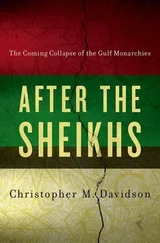Neill’s daughter, Zoë Readhead, has run Summerhill since 1985. Neill was sixty-four when his only child was born; when she was two, Picture Post ran a story saying that of all the children in Britain, she had the best chance of being free. “I remember the orgone accumulator vividly,” she told me. “It was quite chilly in there because of the zinc.” 20As a child Readhead was prescribed half an hour a day in the device; she recalls the red plastic cushion she sat on and the funnel or “shooter” she was encouraged to position over her ear to try to cure a recurrent earache. She also remembers that as she grew up Neill lost interest in the machine (he thought he’d been mistaken in putting an extra layer of asbestos around it), and moved it to a corner of the garage.
By the time Reich died, in 1957, he and Neill were no longer communicating. In December 1954 Neill wrote, “It gave me a great shock to find you believing in visits from other planets. No, I said, it can’t be true; Reich is a scientist and unless he sees a flying saucer he won’t accept it as a reality. I can’t understand it.” 21Reich, whose sanity had long been an open question (Sandor Rado, who analyzed Reich for a few months in 1931, said that he was “schizophrenic in the most serious way”), had started to suffer from paranoid delusions about the world being under attack by UFOs. 22The armor-clad orgone box was always something of a protective shield, illustrative of Reich’s sense of being besieged, but he now built a “cloudbuster,” an orgone gun that was designed not only to influence the weather— diverting hurricanes and making it rain in the desert— but to be the first line of defense against an alien invasion. It was a kind of orgone box turned inside out, so that it could work its therapeutic magic on the cosmos.
Reich initiated the break with Neill; his young son, Peter, who was spending the summer at Summerhill, told Neill that that the American planes passing over the school had been sent to protect him, or so his father said. Neill replied that this was nonsense (there was a large U.S. air base nearby), and when Reich heard of Neill’s response he wrote to his remaining supporters that Neill was no longer to be trusted. In the American edition of Neill’s Summerhill: A Radical Approach to Childhood , published in 1960, all references to Reich were deleted because the publishers considered him too controversial. (The book sold two million copies in the United States.) But Neill never turned his back entirely on his friend’s philosophy, and long after Reich’s death he persuaded Zoë to go to Norway to have vegetotherapy with another of Reich’s disciples, Ola Raknes.
Reich died of a heart attack in Lewisburg Federal Penitentiary in 1957, eight months after being sentenced. If Reich’s claims were no more than ridiculous quackery, as the FDA doctors who refuted them suggested, and if he was just a paranoid schizophrenic, as one court psychiatrist concluded, then why did the U.S. government consider him such a danger? What was happening in America that led Reich to become an emblem of such a deep fear?
The critic Louis Menand described Arthur Koestler, with whom Reich shared a Communist cell in Berlin, as “a slightly mad dreidel that spun out of Central Europe and across the history of a bloody century.” 23Reich’s story traces a similarly erratic path, and looking back at his era can help to shed new light on it. Through the history of Reich’s box it’s possible to unpack the story of how sex became political in the twentieth century, and how it encountered Hitler, Stalin, and McCarthy along the way. Reich created the modern cult of the orgasm and, influentially, held that ecstasy was a point of resistance, immune to political control. Of course, the birth control pill— licensed by the FDA in 1957 (the year Reich died) for treating women with menstrual disorders— ultimately provided the technological breakthrough that facilitated the sexual liberation of the following decade. But Reich, perhaps more than any other sexual philosopher, had already given the erotic enthusiasm of the 1960s an intellectual justification, and laid the theoretical foundations for that era.
His ideas rallied a new generation of dissenters, and his orgone box, however unlikely an idea it may now seem, became a symbol of the sexual revolution. In January 1964, Time magazine declared that “Dr. Wilhelm Reich may have been a prophet. For now it sometimes seems that all America is one big Orgone Box”:
With today’s model, it is no longer necessary to sit in cramped quarters for a specific time. Improved and enlarged to encompass the continent, the big machine works on its subjects continuously, day and night. From innumerable screens and stages, posters and pages, it flashes the larger-than-life-sized images of sex. From countless racks and shelves, it pushes the books which a few years ago were considered pornography. From myriad loudspeakers, it broadcasts the words and rhythms of pop-music erotica. And constantly, over the intellectual Muzak, comes the message that sex will save you and libido make you free. 24
Time called this new “ sex-affirming culture” the “second sexual revolution”— the first having occurred in the 1920s, “when flaming youth buried the Victorian era and anointed itself as the Jazz Age.” In contrast, the children of the 1960s had little to rebel against and found themselves, Time commented, “adrift in a sea of permissiveness,” which they attributed to Reich’s philosophy: “Gradually, the belief spread that repression, not license, was the great evil, and that sexual matters belonged in the realm of science, not morals.” 25
In 1968 student revolutionaries graffitied Reichian slogans on the walls of the Sorbonne, and in Berlin they hurled copies of Reich’s book The Mass Psychology of Fascism at police. At the University of Frankfurt 68ers (as they were called in German) were advised, “Read Reich and act accordingly!” 26According to the historian Dagmar Herzog, “No other intellectual so inspired the student movement in its early days, and to a degree unmatched either in the United States or other Western European nation.” 27In the 1970s, feminists such as Shulamith Firestone, Germaine Greer, and Juliet Mitchell continued to promote Reich’s work with enthusiasm. 28
However, even in his lifetime, Reich came to believe that the sexual revolution had gone awry. Indeed, his ideals seemed to run aground in the decade of free love, which saw erotic liberation co-opted and absorbed into what the historian of psychoanalysis Eli Zaretsky calls a “sexualised dreamworld of mass consumption.” 29Herbert Marcuse, another émigré who became the hero of a younger generation, provided the most rigorous critique of the darker side of liberation. After his initial enthusiasm for a world characterized by “polymorphous perversity,” Marcuse became cynical about it, and he ended his career with a series of brilliant analyses of the ways in which the establishment adapted all these liberated ideas (the “intellectual Muzak” of the time) into an existing system of production and consumption. Reich had propagated an expressive vision of the self, but his sexualized politics of the body soon dissolved into mere narcissism as consumers sought to express themselves through their possessions. In the process, as Marcuse was early in detecting, sex and radical politics became unstuck.
It is a testament to the popularity Reich once had that his name is still remembered at all— so many of his colleagues have been forgotten. But he is now known more for his mad invention rather than for the sexual radicalism that box contained. Reich’s eccentric device might be seen as a prism through which to look at the conflicts and controversies of that era. Why did a generation seek to shed its sexual repressions by climbing into a closet? And why were others so threatened by it? What does it tell us about the ironies of the sexual revolution that the symbol of liberation was a box?
Читать дальше












